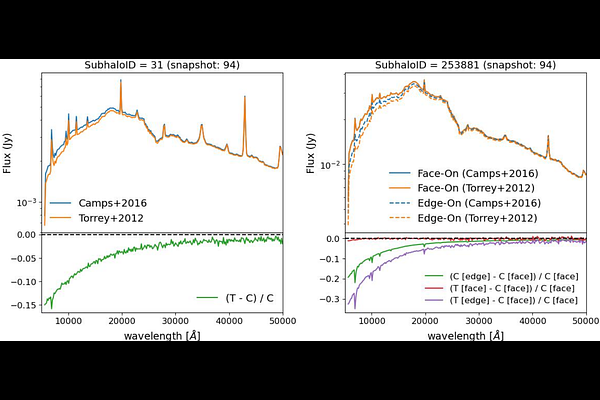GalaxyGenius: A Mock Galaxy Image Generator for Various Telescopes from Hydrodynamical Simulations

GalaxyGenius: A Mock Galaxy Image Generator for Various Telescopes from Hydrodynamical Simulations
Xingchen Zhou, Hang Yang, Nan Li, Qi Xiong, Furen Deng, Xian-Min Meng, Renhao Ye, Shiyin Shen, Peng Wei, Qifan Cui, Zizhao He, Ayodeji Ibitoye, Chengliang Wei, Yuedong Fang
AbstractTo advance research on galaxies in the era of large-scale sky surveys, we introduce GalaxyGenius, a Python package designed to produce synthetic galaxy images tailored to different telescopes based on hydrodynamical simulations. The package comprises three main modules: data preprocessing, ideal data cube generation, and mock observation. Specifically, the preprocessing module extracts necessary properties of star and gas particles for a selected subhalo from hydrodynamical simulations and creates the execution file for the following radiative transfer procedure. Subsequently, building on the above information, the ideal data cube generation module executes a widely-used radiative transfer project, specifically the SKIRT, to perform the SED assignment for each particle and the radiative transfer procedure to produce an IFU-like ideal data cube. Lastly, the mock observation module takes the ideal data cube and applies the throughputs of aiming telescopes while also incorporating the relevant instrumental effects, point spread functions (PSFs), and background noise to generate desired mock observational images of galaxies. To showcase the outcomes of GalaxyGenius, We create a series of mock images of galaxies based on the IllustrisTNG and EAGLE simulations for both space and ground-based surveys spanning from the ultraviolet to infrared wavelength coverages, including CSST, Euclid, HST, JWST, Roman, and HSC. GalaxyGenius offers a flexible framework developed to generate mock galaxy images with customizable recipes. These generated images can serve as valuable references for verifying and validating new approaches in astronomical research, and they can also act as training sets for deep learning relevant studies where real observational data are insufficient.